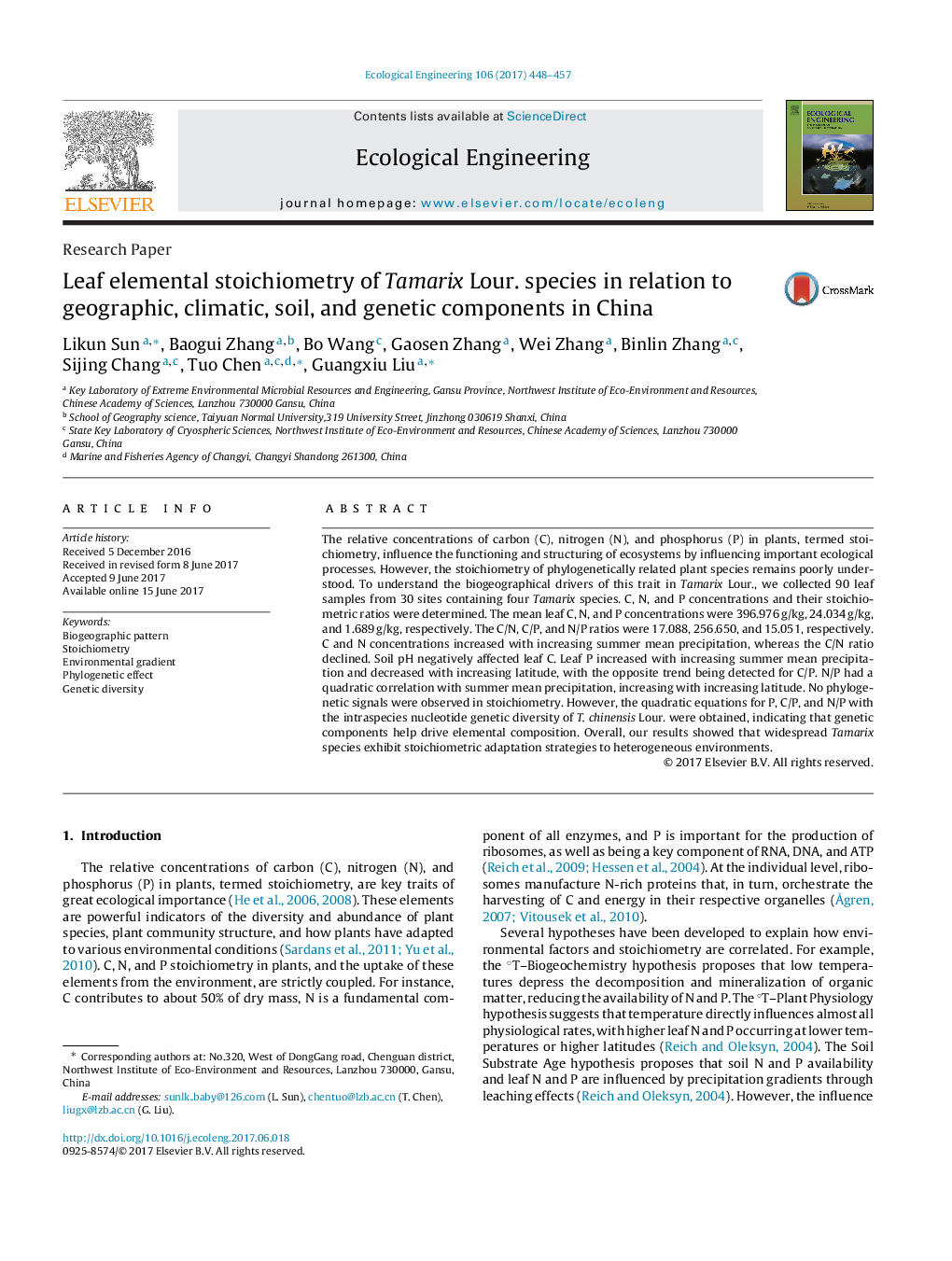| Article ID | Journal | Published Year | Pages | File Type |
|---|---|---|---|---|
| 5743863 | Ecological Engineering | 2017 | 10 Pages |
The relative concentrations of carbon (C), nitrogen (N), and phosphorus (P) in plants, termed stoichiometry, influence the functioning and structuring of ecosystems by influencing important ecological processes. However, the stoichiometry of phylogenetically related plant species remains poorly understood. To understand the biogeographical drivers of this trait in Tamarix Lour., we collected 90 leaf samples from 30 sites containing four Tamarix species. C, N, and P concentrations and their stoichiometric ratios were determined. The mean leaf C, N, and P concentrations were 396.976Â g/kg, 24.034Â g/kg, and 1.689Â g/kg, respectively. The C/N, C/P, and N/P ratios were 17.088, 256.650, and 15.051, respectively. C and N concentrations increased with increasing summer mean precipitation, whereas the C/N ratio declined. Soil pH negatively affected leaf C. Leaf P increased with increasing summer mean precipitation and decreased with increasing latitude, with the opposite trend being detected for C/P. N/P had a quadratic correlation with summer mean precipitation, increasing with increasing latitude. No phylogenetic signals were observed in stoichiometry. However, the quadratic equations for P, C/P, and N/P with the intraspecies nucleotide genetic diversity of T. chinensis Lour. were obtained, indicating that genetic components help drive elemental composition. Overall, our results showed that widespread Tamarix species exhibit stoichiometric adaptation strategies to heterogeneous environments.
